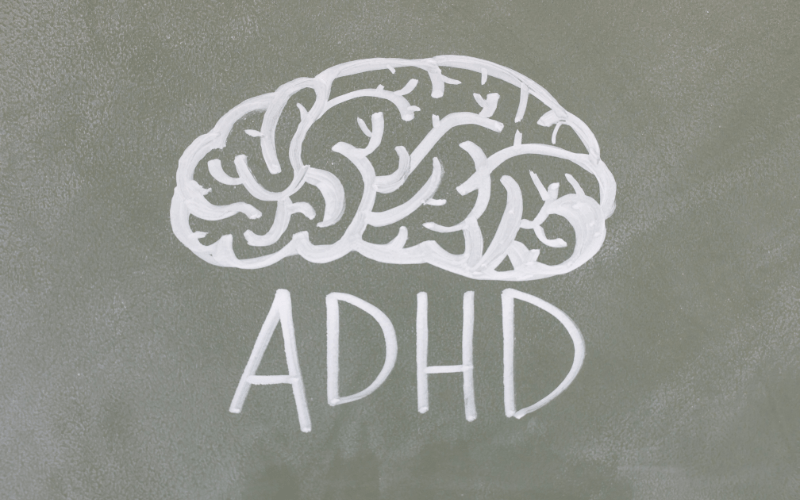March includes Neurodivergence Celebration Week, a time to celebrate neurodiversity acceptance, equality and inclusion. We are featuring a two part post on some myths EMDR therapists might face when working with Autistic and ADHD clients written by EMDRIA members Skylar Ibarra, Jane Kosloff, and Erin Wheeler.
Myth Busters: Myths Standing Between EMDR Practitioners and their Autistic and ADHD Clients | Part 1
Guest Blog Post by Erin Wheeler, LCSW, PMH-C, Skylar Ibarra, LCSW, PMH-C, and Jane Kosloff, LICSW, PMH-C
In recent years, the neurodiversity paradigm has offered a transformative lens for understanding and supporting neurodivergent individuals, encouraging practitioners to rethink long-standing assumptions and approaches. This evolving discourse regarding neurodiversity, especially around ADHD and autism, has widened the interest and curiosity of EMDR practitioners in learning how to provide effective and affirming EMDR.
Part One of this article examines two of four common myths around the intersections of ADHD, autism, and EMDR therapy. By deconstructing myths and offering potential paths forward, the authors of this article hope to enhance the EMDR community’s foundational knowledge around neuro-affirming care and shared best practices, allowing for neuro-affirming EMDR therapy to become more accessible for all of our client populations.
To help dispel common myths and misconceptions, this article reviews recent research findings which often mirror observations seen within neurodivergent communities. Although this article highlights many findings derived from traditional research, all three authors share the belief that research data is not inherently more important than lived experience perspectives. This reflects the principle of centering lived experience from the neurodiversity paradigm.
***Notes on language: This article will use identity-first language—such as “autistic person” instead of “person with autism” and “ADHDer” instead of “person with ADHD.” Identity-first language reflects the preferences of many within the autistic and ADHD communities, who view their neurodivergence as an integral part of their identity rather than something separate. That being said, it is important always to honor how a client personally identifies. A community consensus is not more important than individual preference. When speaking in general terms though, this article will use identity-first language.
This article will also not be spelling out the full acronym for ADHD. This decision also aligns with the neurodiversity paradigm, which challenges the notion of ADHD as a “disorder.” These choices in language aim to model the shift toward neuro-affirming practices and set the stage for a deeper discussion on how EMDR practitioners can better meet the needs of neurodivergent clients.
Myth # 1: The increase in ADHD and autism identification in adults is a passing trend
Imagine that a person has found certain tasks and experiences difficult throughout their life, seemingly more difficult than most people around them. They always assumed that they were just bad at certain tasks. This person gets by most of the time, but they are constantly exhausted. One day, they have coffee with a good friend who was recently diagnosed with ADHD. After hearing about their friend’s experiences, something clicks. They research ADHD online and read through social media posts. Their experiences resonate in a way that they never expected. Maybe their difficulties aren’t all personal failings. This could explain so much. This person brings their observations and thoughts to their mental health therapist at their next appointment.
Here are two scenarios of how the therapist might respond:
- Scenario A: “If you really had ADHD, it would have been identified by now. You’ve gotten this far. Everyone thinks they have ADHD these days.”
- Scenario B: “That’s interesting. Can you tell me more about the experiences that you’re resonating with?”
As one might guess, scenario A would likely end the conversation and could potentially lead to shame or embarrassment for the client. Scenario B could open the conversation toward further exploration.
Although perhaps simplified, this example demonstrates a real-world consequence that results from the myth that the recent increase in the identification of ADHD and autism, especially in adults, is merely a passing trend and that clients are being overdiagnosed. On a fundamental level, practitioners can support experiences that clients recognize as real.
A 2023 survey from the National Center for Health Statistics Rapid Surveys System shows that the rate of ADHD in the US adult population is significantly higher than previously thought. Additionally, 50 percent of adult ADHDers were not diagnosed until adulthood (Staley et al., 2024). While overdiagnosis is a common concern for mental health providers, researchers have proposed that focusing on overdiagnosis actually creates a barrier to correct ADHD diagnosis and increases stigma, which especially impacts those who have been most excluded historically, such as women and BIPOC individuals (Abdelnour et al., 2022; Eagle & Ringland, 2023).
Among autistic adults, research indicates that those who self-diagnose generally meet the criteria for a formal diagnosis. These individuals do report more difficulty being taken seriously by medical professionals around being autistic (Overton et al., 2023). Although there are no large-scale surveys to capture the number of autistic adults, many studies indicate autism is likely under-recognized in adults, especially in women (Brugha et al., 2011; Haney, 2016; Rynkiewicz et al., 2019).
It is also important to look at the percentage of ADHDers or autistic adults who attend outpatient mental health services. Studies estimate that 7-38 percent of clients who seek out mental health services are ADHDers (Gerhand & Saville, 2021). Autistic adults are also a higher percentage of outpatient mental health clients than previously thought, with research indicating that 10-20 percent of adults in these settings meet diagnostic criteria for autism (Gilmore et al., 2022). Although this research is in its early stages, this data makes a convincing argument that many mental health practitioners are already supporting ADHDer and autistic adult clients in their practices, even if both the professional and client are not aware.
To best support ADHDer and autistic adults through the AIP lens, practitioners need to be open to the possibility that more adults are ADHDers and autistic than previously understood. Not only is this reflected in the research already cited, but it is also reflected in observations by neurodivergent-affirming EMDR communities and within the authors’ clinical practices. The authors of this article advocate for a stance of openness and curiosity when a client is questioning if they could be an ADHDer or autistic.
Myth #2: You cannot use EMDR with autistic and/or ADHDer clients
When EMDR practitioners meet with autistic/ADHDer clients, common differences in cognitive and sensory processing can lead clinicians to question if EMDR therapy is an option for them.
- What if a client cannot mentally visualize (has aphantasia) and is trying to do the calm place exercise?
- What if it is difficult for a client to name emotions or interpret body sensations (is alexithymic or has differences in interoception)?
- Will an ADHDer be able to focus well enough to successfully reprocess a memory?
The good news is that there is no evidence that any of the above processing differences or other common experiences for ADHDers/autistic clients exclude them from being successful with EMDR therapy. While researchers have only recently started studying EMDR with ADHD/autistic clients, the initial evidence shows that EMDR can be effective for processing trauma in autistics and ADHDers (Logrebt-van Buuren et al., 2018; Guidetti et al. 2023). Fisher et al. (2023) has looked at what elements or modifications are important to offering successful EMDR to autistic clients and found that therapist characteristics, such as participating in training around autism and seeking individual case consultation, could be important factors.
As the research around adaptations for EMDR with ADHDers/autistic clients is limited, the authors want to share tangible examples of how to incorporate modifications within practice, based on clinical experience. Adjustments such as utilizing felt-sense (somatic) or tangible resourcing tools (photographs, an actual container, etc) accomplish the same goals as visualizations and seem to tap into implicit memory. This applies to target “image” selection as well. Making use of scents, textures, physical movements, and other sense-based memory storage are just some of the alternatives available to EMDR practitioners as they support their autistic and ADHDer clients. Each phase poses its own opportunities for creative and effective modifications that keep the overall protocol intact.
While some adaptations may enhance accessibility, viewing neurodivergent clients as needing an entirely different approach can reinforce stigma and complicate effective EMDR implementation. Using an identity-centered, neurodiversity-affirming lens can allow therapists to follow standard EMDR protocols while making accommodations as needed. This lens could potentially help make EMDR more accessible to clients who may not fit ADHD or autistic identities but might benefit from modifications to fit their unique cognitive or sensory processing needs.

Jane Kosloff

Erin Wheeler

Skylar Ibarra
Jane Kosloff, LICSW, PMH-C is an EMDRIA Consultant and licensed clinical social worker in private practice in the Seattle area. Jane’s clinical interests include trauma, EMDR, perinatal trauma and OCD, and supporting neurodivergent clients from an affirming lens. Kosloff offers training and consultation around neuro-affirming practices.
Erin Wheeler, LCSW, PMH-C, is an EMDRIA Consultant-in-Training based in Chicago, IL. Her practice supports the transition to parenthood, particularly for autistic and ADHD parents, and specializes in EMDR for birth and reproductive trauma. Wheeler also offers EMDR consultation with a focus on neurodiversity-affirming practices.
Skylar Ibarra, LCSW, PMH-C is an EMDRIA Consultant-in-Training and is in private practice in Brea, CA (unceded Tongva land). Skylar uses neuro-affirming practices through an AIP lens as she works at the intersection of OCD, perinatal mental health, cPTSD, and ND identity exploration. Ibarra offers consultation and trainings.
References
American Academy of Pediatrics. (2014, May 6). Study finds ADHD and trauma often go hand in hand. ScienceDaily. Retrieved October 20, 2024, from www.sciencedaily.com/releases/2014/05/140506074719.htm
Abdelnour, E., Jansen, M. O., & Gold, J. A. (2022). ADHD diagnostic trends: Increased recognition or overdiagnosis? Missouri Medicine, 119(5), 467–473. https://pmc.ncbi.nlm.nih.gov/articles/PMC9616454/
Botha, M., & Frost, D. M. (2020). Extending the minority stress model to understand mental health problems experienced by the autistic population. Society and Mental Health, 10(1), 20-34. https://doi.org/10.1177/2156869318804297
Botha, M., & Gillespie-Lynch, K. (2022). Come as you are: Examining autistic identity development and the neurodiversity movement through an intersectional lens. Human Development, 66(2), 73-92. https://doi.org/10.1159/000524123
Bottema-Beutel, K., Park, H., & Kim, S. Y. (2018). Commentary on social skills training curricula for individuals with ASD: Social interaction, authenticity, and stigma. Journal of Autism and Developmental Disorders, 48(3), 953–964. https://doi.org/10.1007/s10803-017-3400-1
Brugha, T. S., McManus, S., Bankart, J., Scott, F., Purdon, S., Smith, J., Bebbington, P., Jenkins, R., & Meltzer, H. (2011). Epidemiology of autism spectrum disorders in adults in the community in England. Archives of General Psychiatry, 68(5), 459–465. https://doi.org/10.1001/archgenpsychiatry.2011.38
Cooper, K., Smith, L. G. E., & Russell, A. (2017). Social identity, self‐esteem, and mental health in autism. European Journal of Social Psychology, 47(8), 844-857. https://doi.org/10.1002/EJSP.2297
Crenshaw, K. (1989). Demarginalizing the intersection of race and sex: A Black feminist critique of antidiscrimination doctrine, feminist theory and antiracist politics. University of Chicago Legal Forum, 1989(1), 139-167. Available at: https://chicagounbound.uchicago.edu/uclf/vol1989/iss1/8
Davies, J., Cooper, K., Killick, E., Sam, E., Healy, M., Thompson, G., Mandy, W., Redmayne, B., & Crane, L. (2024). Autistic identity: A systematic review of quantitative research. Autism Research, 17(5), 874–897. https://doi.org/10.1002/aur.3105
Dwyer, P. (2022). The neurodiversity approach(es): What are they and what do they mean for researchers? Human Development, 66(2), 73-92. https://doi.org/10.1159/000523723
Eagle, T., & Ringland, K.E. (2023). “You Can’t Possibly Have ADHD”: Exploring validation and tensions around diagnosis within unbounded ADHD social media communities. Proceedings of the 25th International ACM SIGACCESS Conference on Computers and Accessibility. https://doi.org/10.1145/3597638.3608400
Faraone, S.V., & Larsson, H. (2019.) Genetics of attention deficit hyperactivity disorder. Molecular Psychiatry 24, 562–575. https://doi.org/10.1038/s41380-018-0070-0
Fisher, N., Patel, H., & Spain, D. (2022). Using eye movement desensitisation and reprocessing (EMDR) with autistic individuals: A qualitative interview study with EMDR therapists. Psychology and Psychotherapy: Theory, Research and Practice, 95(4), 1071-1089. https://doi.org/10.1111/papt.12419
Fisher, N., van Diest, C., Leoni, M., & Spain, D. (2023). Using EMDR with autistic individuals: A Delphi survey with EMDR therapists. Autism, 27(1), 43-53. https://doi.org/10.1177/13623613221080254
Gerhand, S., & Saville, C. W. N. (2021). ADHD prevalence in the psychiatric population. International Journal of Psychiatry in Clinical Practice, 26(2), 165–177. https://doi.org/10.1080/13651501.2021.1914663
Gilmore, D., Longo, A., Krantz, M., Radford, D., & Hand, B. N. (2022). Five ways providers can improve mental healthcare for autistic adults: A review of mental healthcare use, barriers to care, and evidence-based recommendations. Current Psychiatry Reports 24, 565–571. https://doi.org/10.1007/s11920-022-01362-z
Guidetti, C., Brogna, P., Chieffo, D. P. R., Turrini, I., Arcangeli, V., Rausa, A., Bianchetti, M., Rolleri, E., Santomassimo, C., Di Cesare, G., Ducci, G., Romeo, D.M., & Brogna, C (2023). Eye movement desensitization and reprocessing (EMDR) as a possible evidence-based rehabilitation treatment option for a patient with ADHD and history of adverse childhood experiences: A case report study. Journal of Personalized Medicine, 13(2), 200. https://doi.org/10.3390/jpm13020200
Haney, J. L. (2016). Autism, females, and the DSM-5: Gender bias in autism diagnosis. Social Work in Mental Health, 14(4), 396–407. https://doi.org/10.1080/15332985.2015.1031858
Kosatka, D., & Ona, C. (2014). Eye movement desensitization and reprocessing in a patient with Asperger’s disorder: Case report. Journal of EMDR Practice and Research, 8(1), 13-18. https://doi.org/10.1891/1933-3196.8.1.13
Lobregt-van Buuren, E., Sizoo, B., Mevissen, L., & De Jongh, A. (2019). Eye movement desensitization and reprocessing (EMDR) therapy as a feasible and potential effective treatment for adults with autism spectrum disorder (ASD) and a history of adverse events. Journal of Autism and Developmental Disorders, 49(1), 151-164. https://doi.org/10.1007/s10803-018-3687-6
Lugo-Candelas, C., Corbeil, T., Wall, M., Posner, J., Bird, H., Canino, G., Fisher, P. W., Suglia, S. F., & Duarte, C. S. (2021). ADHD and risk for subsequent adverse childhood experiences: Understanding the cycle of adversity. Journal of Child Psychology and Psychiatry, 62(8), 971-978. https://doi.org/10.1111/jcpp.13352
Maté, G. (2004). Website Page, ADHD: Childhood adaptation, adult disorder. Dr. Gabor Maté. https://drgabormate.com/adhd/.
Overton, G.L., Marsà-Sambola, F., Martin, R., & Cavenagh, P. (2023) Understanding the self-identification of autism in adults: A scoping review. Review Journal of Autism and Developmental Disorders, 11, 682-702. https://doi.org/10.1007/s40489-023-00361-x
Perry, E., Mandy, W., Hull, L., & Cage, E. (2022). Understanding camouflaging as a response to autism-related stigma: A social identity theory approach. Journal of Autism and Developmental Disorders, 52(2), 800–810. https://doi.org/10.1007/s10803-021-04987-w
Renty, J. O., & Royers, H. (2006). Quality of life in high-functioning adults with autism spectrum disorder: The predictive value of disability and support characteristics. Autism, 10(5), 511-524. https://doi.org/10.1177/1362361306066604
Rynkiewicz, A., Janas-Kozik, M., Słopień, A. (2019). Girls and women with autism. Psychiatria Polska, 53(4), 737-752. https://doi.org/10.12740/PP/OnlineFirst/95098
Shapiro, F. (2018). Eye movement desensitization and reprocessing (EMDR) therapy: Basic principles, protocols, and procedures (3rd ed.). The Guilford Press.
Staley B. S., Robinson L. R., Claussen A. H., Katz, S. M., Danielson, M. L., Summers, A. D., Farr, S. L., Blumberg, S. J., & Tinker, S. C. (2024). Attention-deficit/hyperactivity disorder diagnosis, treatment, and telehealth use in adults — National Center for Health Statistics Rapid Surveys System, United States, October–November 2023. MMWR Morb Mortal Wkly Rep 2024,73, 890–895. http://dx.doi.org/10.15585/mmwr.mm7340a1
Back to Focal Point Blog Homepage
Additional Resources
If you are a therapist interested in the EMDR training:
- Learn more about EMDR therapy at the EMDRIA Library
- Learn more about EMDR Training
- Search for an EMDR Training Provider
- Check out our EMDR Training FAQ
If you are EMDR trained:
- Check out the EMDRIA Let’s Talk EMDR Podcast
- Check out the EMDRIA Focal Point Blog
- Learn more about EMDRIA membership
- Search for EMDR Continuing Education opportunities
If you are an EMDRIA™ Member:
- Learn more about EMDR Consultation
- Find clinical practice articles in the EMDRIA Go With That Magazine®
- Search for articles in Journal of EMDR Practice and Research in the EMDRIA Library
Date
March 21, 2025
Contributor(s)
Erin Wheeler, Skylar Ibarra, Jane Kosloff
Topics
ADHD/Autism/Neurodiversity
Practice & Methods
Your EMDR Practice




